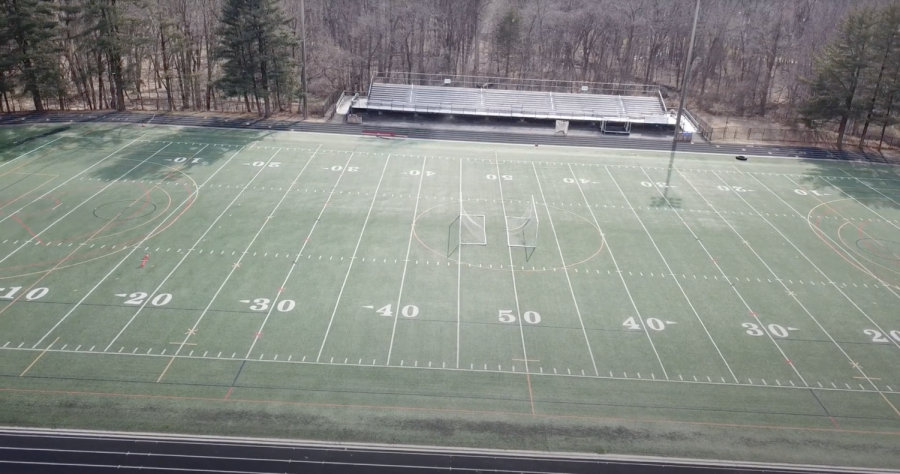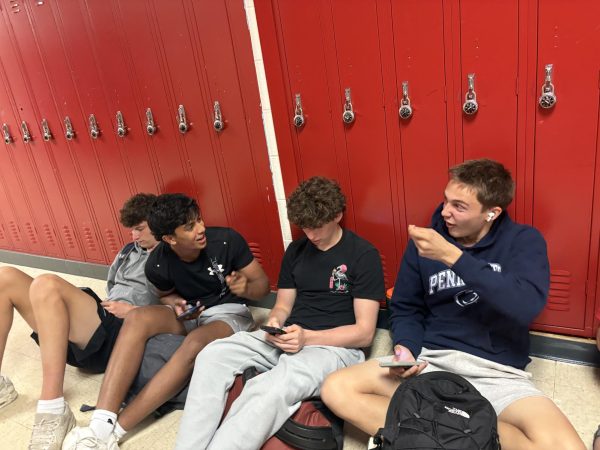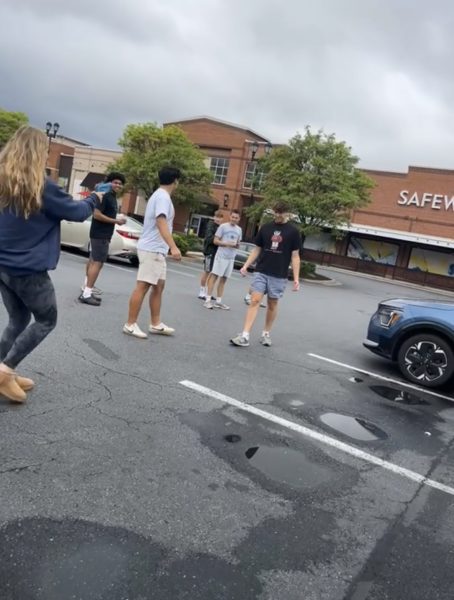Isolated lunch poses new challenge to students
Students have the opportunity to eat lunch on the field on nice days.
Since Apr. 6, students who opted into in-person learning have returned to the school building. Teachers have resumed teaching from the building, and normalcy seems closer than ever. However, COVID-19 has called for new safety protocols to be put into place, one of the most drastic being isolated lunches.
With virtually every area of the school open for lunch during a typical year, students are free to hang out with friends, catch up on schoolwork or get some fresh air outside. However, lunch has now been restricted to three designated locations, where students sit isolated from one another. Students must remain six feet apart from one another but can eat in the cafeteria, commons, or auditorium. When the weather allows for it, students may also eat in the courtyards or the stadiums. Once students choose a spot to eat, they must stay there and confirm their location with a QR code.
Although the key aspect of lunch, eating, remains intact, the restrictions have caused a difference in the overall experience. Lunch is usually not just a time to refuel, it is a time for students to refresh themselves and socialize before their afternoon classes. Students say their favorite part of lunch “was eating and being able to hang out with friends since I didn’t have much of them in my classes,” senior Alex Ochman said.
After a full year of quarantine, greater numbers of teens are struggling with their mental health. A study done by C.S. Mott Children’s Hospital National Poll on Children’s Health at Michigan Medicine showed that out of 977 parents interviewed, 46% said their teens experienced greater mental health struggles from isolation. Isolated lunch does not help the frustrating feeling of being separated from friends for all this time but merely perpetuates it.
In addition to mental health struggles from isolation, social skills have to be revived after months and months at home. Once again, without the ability to hang out with friends during lunch, students are prevented from shaking off the cobwebs caused by quarantine. “Many will struggle with how to socialize again when they’re back in a face-to-face setting after months of virtual-only connections,” Dr. Jerry Halverson of Rogers Behavioral Health said.
This change is especially impactful for the class of 2024. Since school began virtually on Aug. 31, freshmen have not been able to interact face-to-face with their new peers or enjoy eating lunch with new friends. While being back at school will allow students to see their teachers, peers, and the building, isolated lunch prevents them from forming new substantial connections with their classmates.
Current sophomore, juniors, and seniors returning to the building have had a chance to build friendships and bond with their classmates. However, isolated lunch prevents them from continuing to grow those relationships or even form new ones.
Isolated lunch may not be ideal for students looking to integrate back into their everyday lives; however, it is the first step into life post-pandemic. “We’ve been fully isolated for over a year, so being with random people is better than no one,” junior Rebecca McMillen said.
Your donation will support the student journalists of Thomas S. Wootton High School. Your contribution will allow us to purchase equipment and cover our annual website hosting costs.
Josie Rosenstein is a 2022 graduate.








